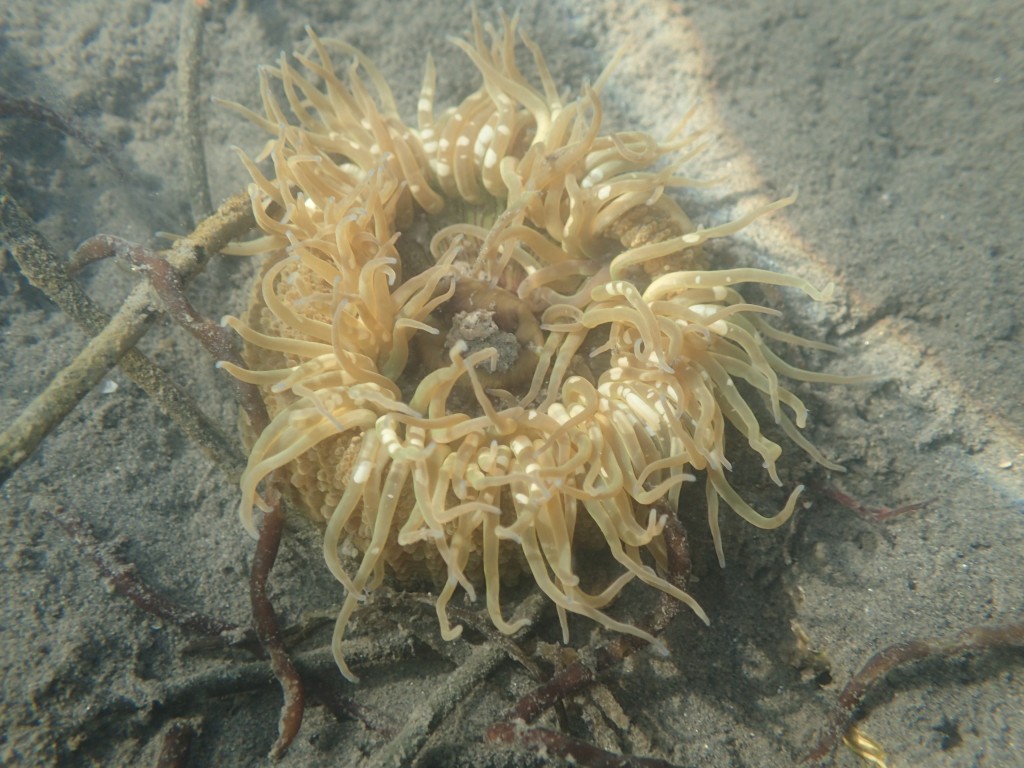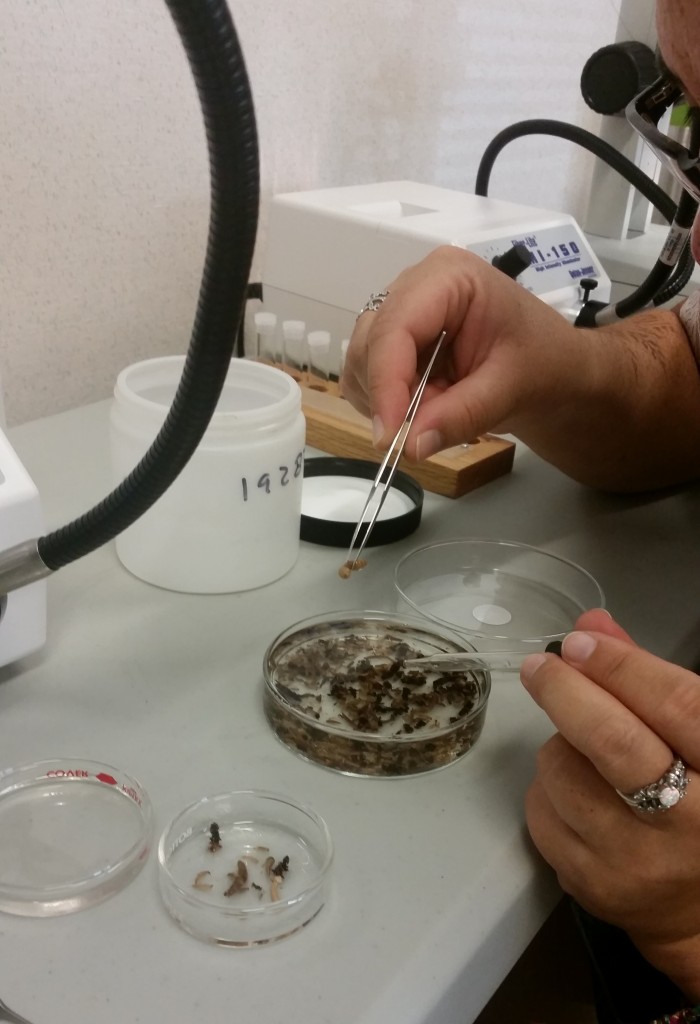Fulfilling our mission to protect and restore the Morro Bay estuary for people and animals requires a lot of hard work in the field. Read on to see what our staff and volunteers have been up to during the month of September.
Eelgrass
September kicked off our busy fall season of eelgrass monitoring. We started the monitoring of eelgrass restoration beds planted in 2012–2014 for the presence and condition of eelgrass.
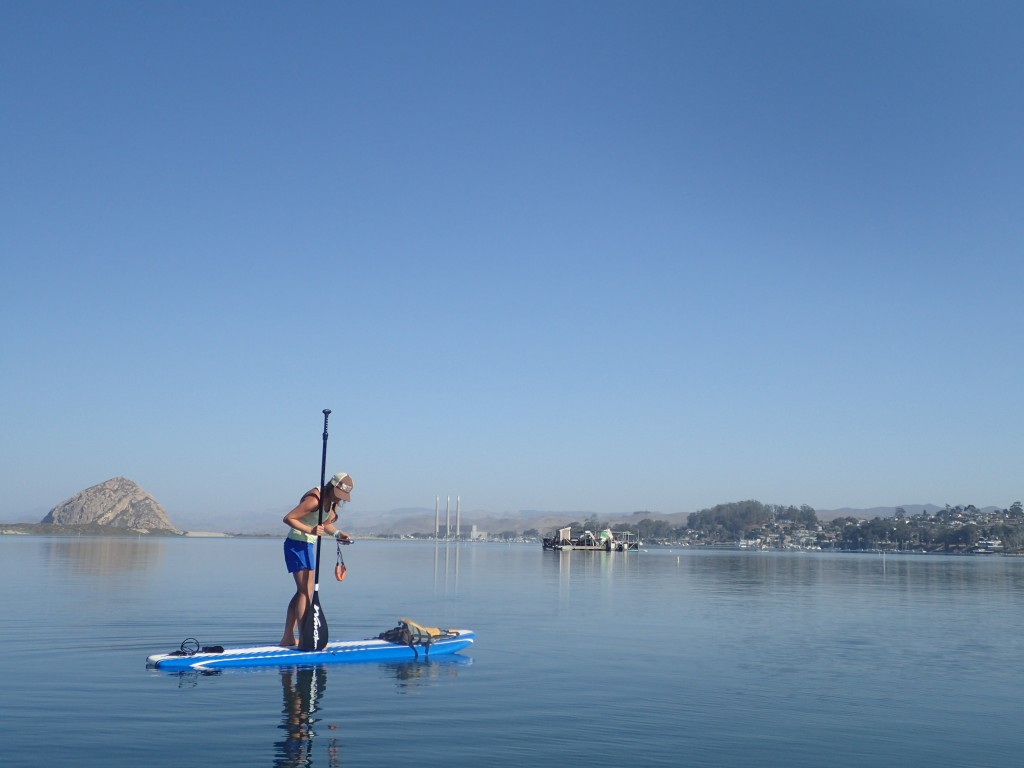
To conduct this monitoring, our staff heads out on paddleboards with handheld GPS units and snorkel gear to find each restoration bed in search of eelgrass. Information gathered from this monitoring will help inform future approaches aimed at eelgrass recovery in Morro Bay. For this monitoring effort, we will be looking at 116 transplant locations throughout Morro Bay as well as looking for new patches of eelgrass.
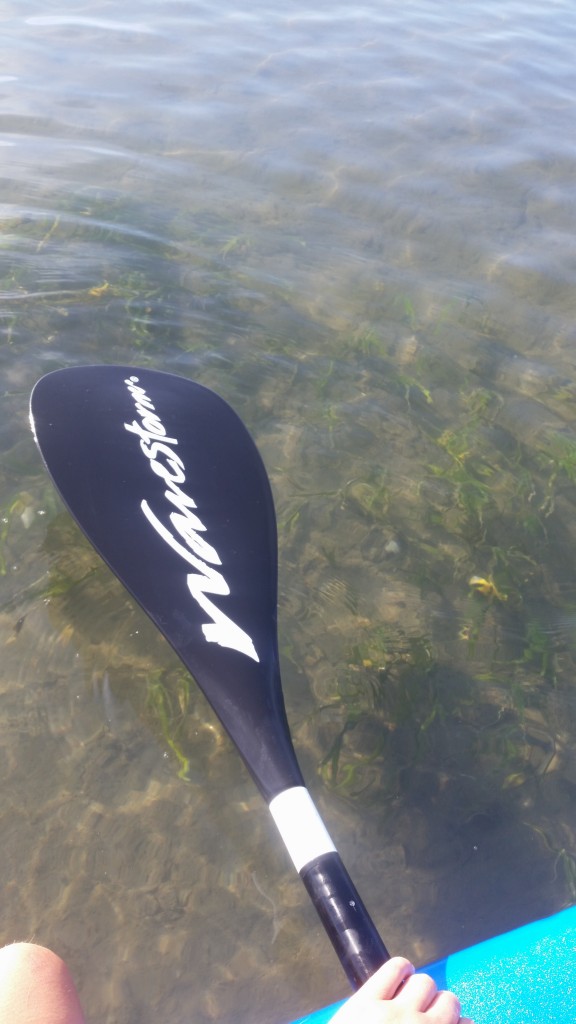
We found an anemone on the sandy bottom of the bay.
We were excited to find two small patches of eelgrass over by Grassy Island. We also found some anemones in the same area, which we haven’t seen back there before.
Along with looking for eelgrass, we are always keeping an eye out for other plants and animals.
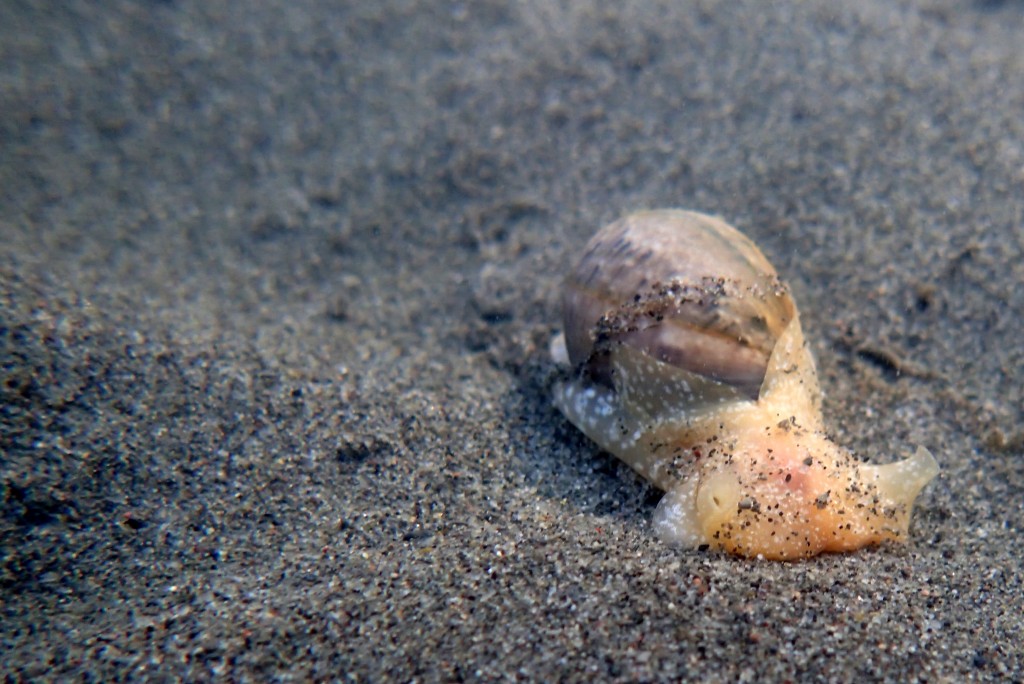
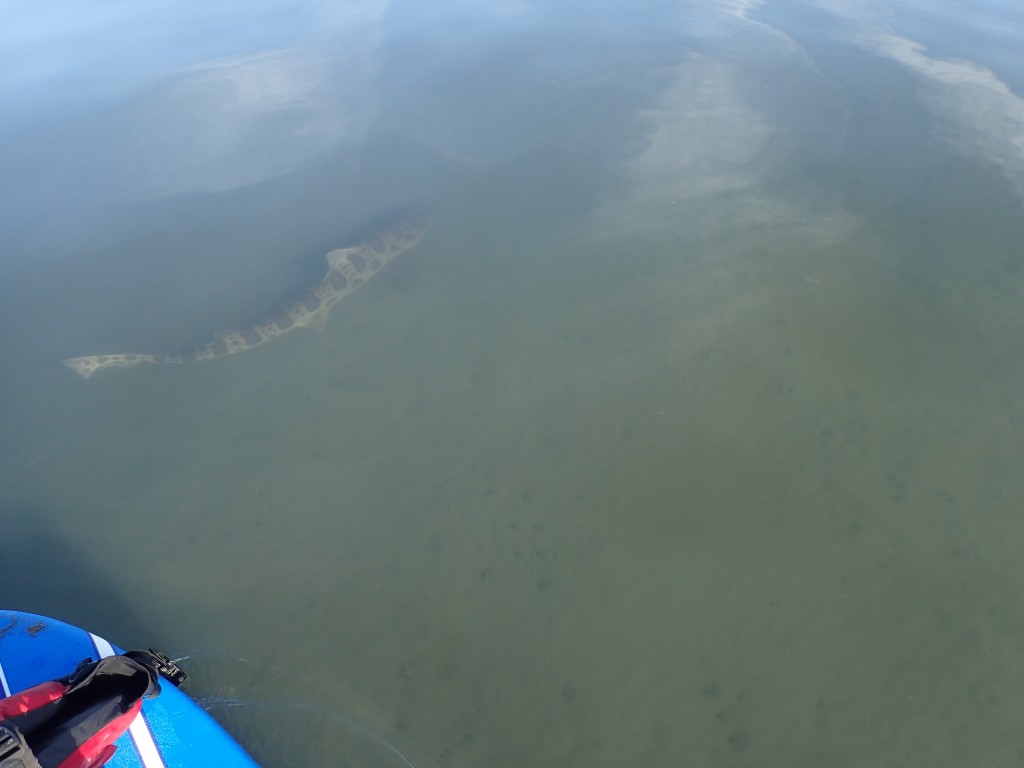
We have had a few mornings with very calm water and great visibility. This not only helps us spot eelgrass, but find leopard sharks (Triakis semifasciata) and bat rays (Myliobatis californica) as well.
Lectures and conferences
Shane gave a guest lecture for an oceanography class at Cuesta college. His lecture covered temperature, dissolved oxygen, conductivity and salinity. Karissa will be giving a guest lecture later in the semester on nitrates. At the end of the semester, the students will take a field trip to various locations in the watershed to measure water quality.
Karissa took a break from eelgrass monitoring to attend a bioassessment training in Redding, CA. This training covered all aspects of freshwater invertebrate taxonomy and the analysis of data to generate metrics to assess the health of the stream, known as biological metric calculations.
During the training, participants poured a sample of bugs into a petri dish and then identified a subset of them to the order level. After sorting bugs to the order, they then identified them down to the family level. This was a great experience to have before our next bioassessment survey in the spring of 2017!
